-
 Bitcoin
Bitcoin $109800
0.96% -
 Ethereum
Ethereum $4462
-0.28% -
 Tether USDt
Tether USDt $1.000
0.01% -
 XRP
XRP $2.821
-0.71% -
 BNB
BNB $861.7
0.16% -
 Solana
Solana $202.1
-1.48% -
 USDC
USDC $1.000
0.03% -
 Dogecoin
Dogecoin $0.2184
0.01% -
 TRON
TRON $0.3411
-0.35% -
 Cardano
Cardano $0.8371
0.97% -
 Chainlink
Chainlink $23.72
-0.38% -
 Hyperliquid
Hyperliquid $45.31
1.40% -
 Ethena USDe
Ethena USDe $1.001
0.03% -
 Sui
Sui $3.324
-0.19% -
 Stellar
Stellar $0.3621
0.40% -
 Bitcoin Cash
Bitcoin Cash $547.2
-0.56% -
 Avalanche
Avalanche $24.23
0.46% -
 Cronos
Cronos $0.2828
-3.05% -
 Hedera
Hedera $0.2226
-1.80% -
 UNUS SED LEO
UNUS SED LEO $9.611
0.32% -
 Litecoin
Litecoin $110.7
-0.96% -
 Toncoin
Toncoin $3.157
0.51% -
 Shiba Inu
Shiba Inu $0.00001250
0.45% -
 Polkadot
Polkadot $3.851
0.19% -
 Uniswap
Uniswap $9.753
-1.24% -
 Dai
Dai $0.9999
0.00% -
 Bitget Token
Bitget Token $4.570
0.11% -
 Monero
Monero $268.2
2.03% -
 Aave
Aave $316.7
-1.64% -
 Ethena
Ethena $0.6473
-4.43%
Is cloud mining profitable?
Cloud mining allows users to rent remote hashing power to mine cryptocurrencies without managing hardware, offering simplicity but requiring careful evaluation of costs and provider reliability.
Jul 14, 2025 at 01:08 am
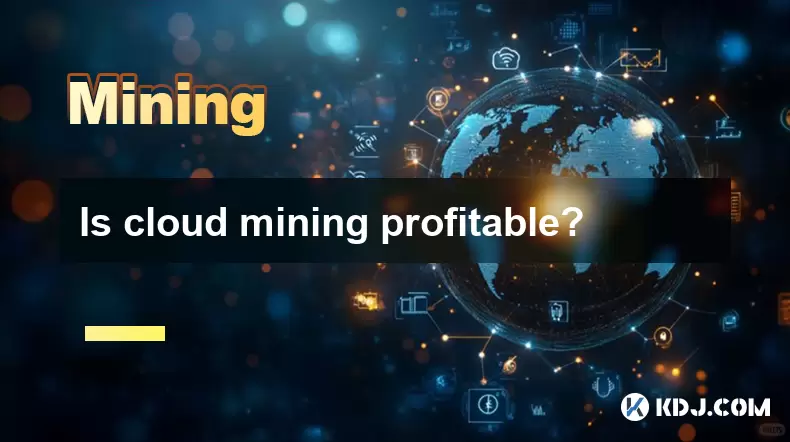
What Is Cloud Mining?
Cloud mining refers to the process of mining cryptocurrencies through remote data centers with shared processing power. Instead of setting up and maintaining expensive mining hardware, users can rent computational power from cloud mining providers. This eliminates the need for technical expertise, electricity costs, and physical space required for traditional mining setups.
The appeal of cloud mining lies in its simplicity and accessibility. Users sign up with a provider, select a mining plan, and begin earning cryptocurrency without owning any equipment. However, profitability depends on several factors including contract terms, market conditions, and operational efficiency.
How Does Cloud Mining Work?
Cloud mining platforms operate by offering contracts that allow users to lease hashing power for a specific period. These contracts typically outline:
- The amount of hashing power rented
- The duration of the contract
- Any maintenance or electricity fees
Users connect to the cloud mining service via an online dashboard where they can monitor their mining progress and earnings. Payouts are usually made directly to the user’s wallet in the mined cryptocurrency.
Providers manage the infrastructure, software updates, and maintenance, which makes this method attractive to those unfamiliar with hardware mining. Some services offer real-time monitoring, allowing users to track daily earnings and performance metrics.
Factors Affecting Profitability
Profitability in cloud mining is not guaranteed and is influenced by multiple variables:
- Cryptocurrency price fluctuations: If the value of the mined coin drops significantly, earnings may not cover costs.
- Mining difficulty: As more miners join the network, difficulty increases, reducing individual returns.
- Contract cost vs. output: High rental fees can eat into profits if the hashing power doesn’t yield enough cryptocurrency.
- Withdrawal and maintenance fees: Some platforms charge recurring fees that reduce net earnings.
It’s essential to calculate potential returns using tools like profit calculators provided by platforms or third-party websites. These tools help estimate earnings based on current difficulty levels, block rewards, and exchange rates.
Selecting a Reliable Cloud Mining Provider
Not all cloud mining services are trustworthy. Due to the lack of regulation, many scams exist in this space. When choosing a provider, consider the following:
- Transparency: Reputable providers publish details about their facilities, hardware used, and uptime statistics.
- User reviews and community feedback: Look for active forums, Reddit threads, or review sites that discuss experiences with the service.
- Contract flexibility: Some providers allow users to terminate early or switch between cryptocurrencies.
- Payout history: Check if the platform has a consistent record of distributing earnings.
Avoid services that promise unrealistic returns or require additional payments beyond the initial contract. Always start with a small investment to test the service before committing larger amounts.
Step-by-Step Guide to Getting Started with Cloud Mining
To begin cloud mining, follow these steps carefully:
- Choose a reputable cloud mining provider after extensive research.
- Create an account and complete identity verification if required.
- Select a mining contract based on your budget and preferred cryptocurrency.
- Pay for the contract using supported payment methods (cryptocurrency or fiat).
- Monitor your mining performance through the provider’s dashboard.
- Set up a secure wallet to receive mining payouts.
- Regularly check for contract renewals or expiration dates to avoid automatic charges.
Some platforms allow users to reinvest earnings into additional contracts, potentially increasing long-term gains. Always read the fine print regarding fee structures, payout thresholds, and termination policies.
Frequently Asked Questions
Q: Can I mine multiple cryptocurrencies with one cloud mining contract?A: Some providers allow switching between different coins, but most contracts are specific to a single cryptocurrency. Always confirm whether the contract supports multi-coin mining before purchasing.
Q: Are there tax implications for cloud mining earnings?A: Yes, depending on your country’s regulations, mining income may be subject to taxation. It’s crucial to keep detailed records of earnings and consult a tax professional familiar with cryptocurrency laws.
Q: What happens if a cloud mining company shuts down?A: If a provider ceases operations, you may lose access to your hashing power and future earnings. Some companies offer refunds or compensation, but it's not guaranteed. Always choose financially stable providers with proven track records.
Q: How often are mining payouts distributed?A: Most platforms distribute earnings daily or weekly, depending on the minimum withdrawal threshold. Ensure you understand the payout schedule and any associated fees before investing.
Disclaimer:info@kdj.com
The information provided is not trading advice. kdj.com does not assume any responsibility for any investments made based on the information provided in this article. Cryptocurrencies are highly volatile and it is highly recommended that you invest with caution after thorough research!
If you believe that the content used on this website infringes your copyright, please contact us immediately (info@kdj.com) and we will delete it promptly.
- Memecoins September 2025 Watchlist: What's Hot Now?
- 2025-08-31 23:25:15
- Eric Trump Predicts Bitcoin to $1 Million: Hype or Reality?
- 2025-08-31 23:25:15
- BlockDAG: Redefining Scalability and ROI Potential in 2025
- 2025-08-31 23:05:16
- Ozak AI, Altcoins, and 20x Potential: Navigating the Crypto Landscape
- 2025-09-01 00:05:12
- Bonk Price, Solana Meme Coin, and the Rise of Layer Brett: A New Era?
- 2025-08-31 21:25:12
- ETH Transactions Soar, BTC Whale Shifts Gears: Decoding August's Crypto Charts
- 2025-08-31 21:05:16
Related knowledge
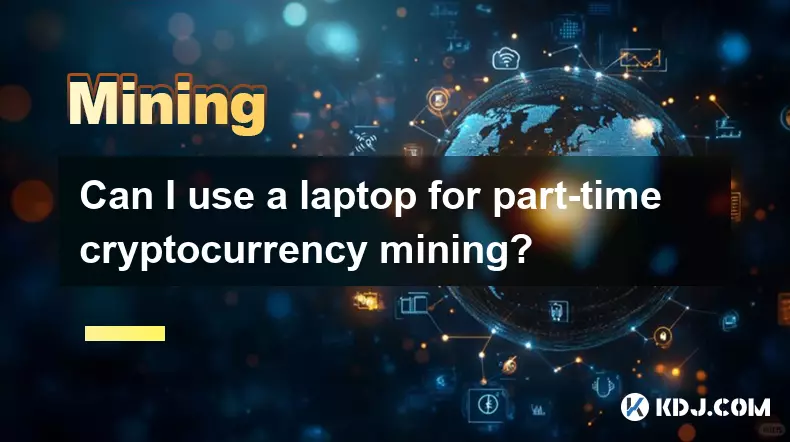
Can I use a laptop for part-time cryptocurrency mining?
Sep 01,2025 at 03:56am
Feasibility of Using a Laptop for Cryptocurrency Mining1. Modern laptops are designed for efficiency and portability, not high-intensity computational...
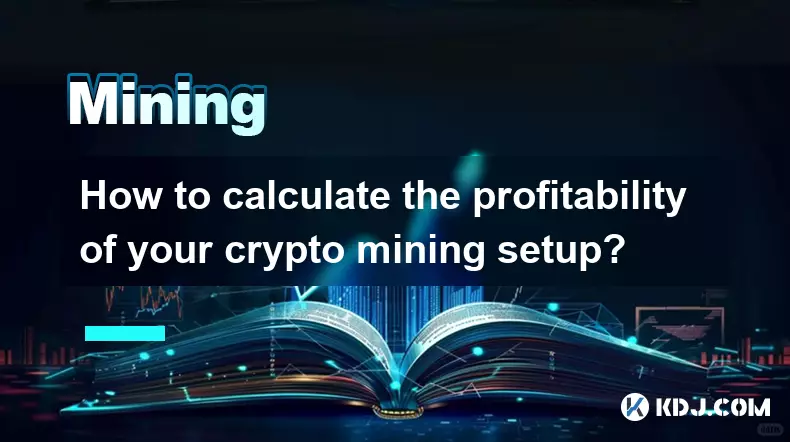
How to calculate the profitability of your crypto mining setup?
Aug 29,2025 at 10:15am
Understanding the Core Components of Mining Profitability1. The first step in evaluating mining profitability involves identifying the hash rate of yo...
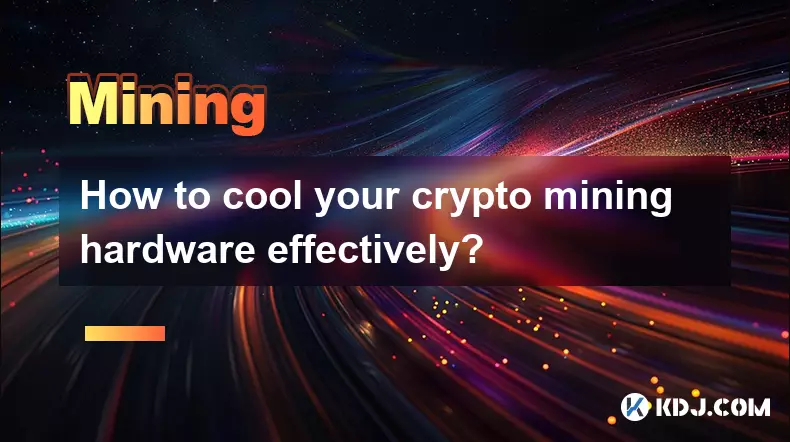
How to cool your crypto mining hardware effectively?
Aug 29,2025 at 07:56am
Optimizing Airflow for Maximum Heat Dissipation1. Positioning mining rigs in areas with unrestricted airflow is essential to prevent heat buildup. Ens...

What are the essential components for a DIY crypto mining rig?
Aug 29,2025 at 08:14am
Core Hardware Requirements for Building a Mining Rig1. A powerful graphics processing unit (GPU) is the heart of any DIY mining setup. Models like the...

How to mine Monero using your computer's CPU?
Aug 30,2025 at 06:56am
Mining Monero with Your CPU: A Practical GuideMonero (XMR) remains one of the most accessible cryptocurrencies for individuals looking to mine using c...
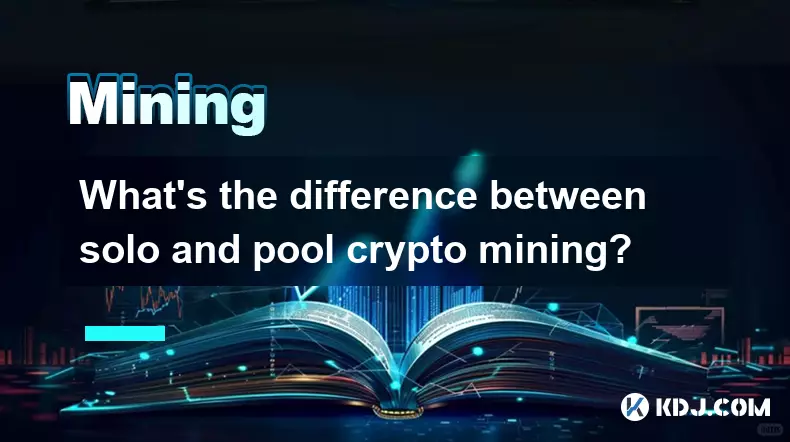
What's the difference between solo and pool crypto mining?
Aug 29,2025 at 02:14am
Solo Mining: Independence and Full Control1. Solo mining refers to the process where an individual miner uses their own computational resources to sol...

Can I use a laptop for part-time cryptocurrency mining?
Sep 01,2025 at 03:56am
Feasibility of Using a Laptop for Cryptocurrency Mining1. Modern laptops are designed for efficiency and portability, not high-intensity computational...

How to calculate the profitability of your crypto mining setup?
Aug 29,2025 at 10:15am
Understanding the Core Components of Mining Profitability1. The first step in evaluating mining profitability involves identifying the hash rate of yo...

How to cool your crypto mining hardware effectively?
Aug 29,2025 at 07:56am
Optimizing Airflow for Maximum Heat Dissipation1. Positioning mining rigs in areas with unrestricted airflow is essential to prevent heat buildup. Ens...

What are the essential components for a DIY crypto mining rig?
Aug 29,2025 at 08:14am
Core Hardware Requirements for Building a Mining Rig1. A powerful graphics processing unit (GPU) is the heart of any DIY mining setup. Models like the...

How to mine Monero using your computer's CPU?
Aug 30,2025 at 06:56am
Mining Monero with Your CPU: A Practical GuideMonero (XMR) remains one of the most accessible cryptocurrencies for individuals looking to mine using c...

What's the difference between solo and pool crypto mining?
Aug 29,2025 at 02:14am
Solo Mining: Independence and Full Control1. Solo mining refers to the process where an individual miner uses their own computational resources to sol...
See all articles

























































































